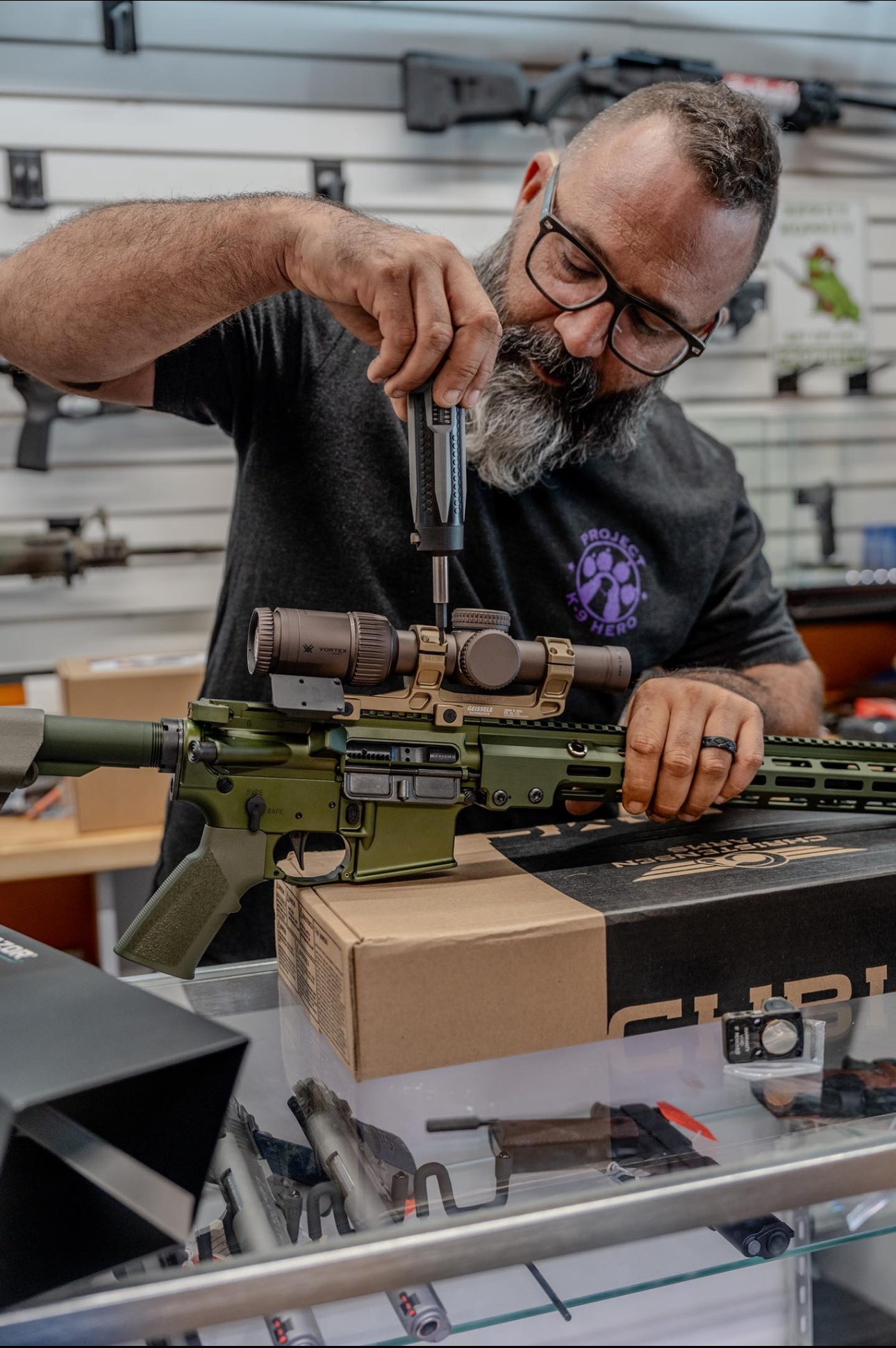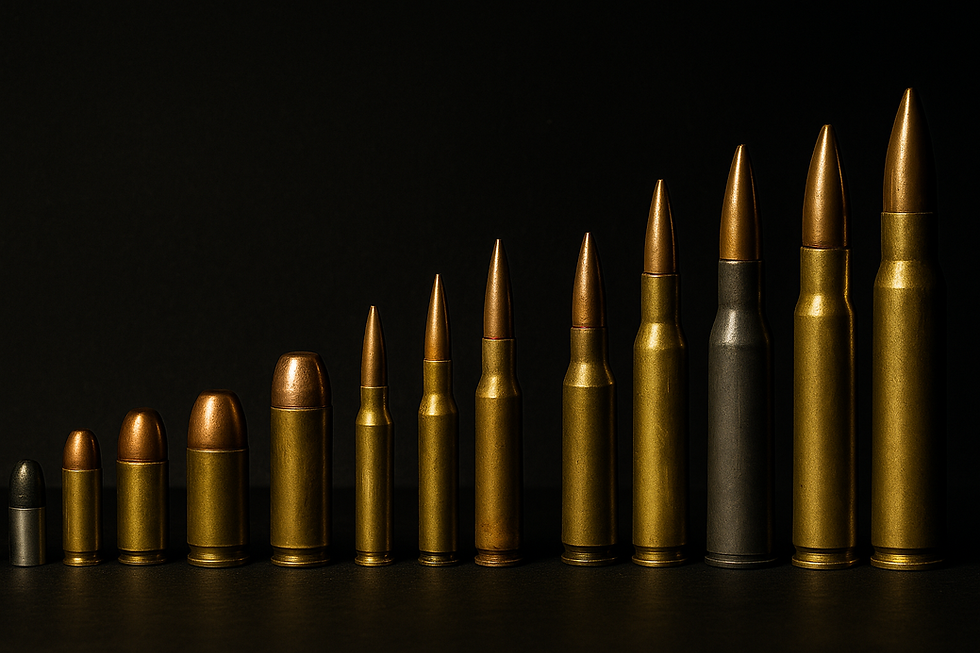Are You Sighted In — or Just Guessing?
- Conrad Castano

- Jun 16
- 5 min read

The target doesn’t care about your excuses, but your family might.
You think your gun is dialed in... until it’s not. Here’s the real talk you’ve been avoiding about your zero, and why it matters more than you think.
By: Family of Patriots
Your Zero Isn’t a Vibe, It’s a Responsibility
When your dot lies, people bleed. Get your zero right before it needs to count.
Let’s get something straight: being "sighted in" isn’t a maybe. It’s a must. And if you’re carrying a firearm for defense, it could mean the difference between hitting your threat.... or hitting what’s behind them. Maybe it’s your kid. Maybe it’s mine. Maybe it’s a stranger who deserved better.
You don’t get a do-over in a real-world shooting situation. Your optic needs to be dialed in. You need to know where your rounds go. It's not a guess, not a shrug, not a “I'll just aim a little high and right.”
That might work standing still on a flat range... or worse, staying in your cubicle lane indoors. (And if that hit a nerve, go read our last blog about indoor vs. outdoor ranges, you’ll know exactly what we mean.)
But try doing that while moving and shooting, under stress, in low light... You won’t rise to the occasion. You’ll fall to your training....... and your setup.
Know Your Zero — Or Own the Misses
Different distances = different outcomes.
A red dot sight zeroed at 10 yards will behave very differently at 25, 50, or 100.
An LPVO with a 100-yard zero might leave you hitting low at close range if you don’t understand holdovers.
If you’re shooting suppressed or switch ammo brands frequently, you might not realize your point of impact is drifting every time.
Being "on target" and being "zeroed" are not the same.
Precision shooting = same hole groups. That’s its own beast.
Combat or defensive shooting = fast, accurate hits on vital zones. No one’s judging your group size, but they damn sure care if you miss entirely.
And if your dot is off and your shots are pulling low-left every time — ask yourself how the hell you plan to “correct” that while walking, pivoting, or returning fire.
You’re not going to aim high-right while moving and gunning. Professionals train years for that kind of offset correction under stress. Most shooters? They shoot twice a month if we’re lucky. Get your gear right so you’re not fighting your own setup.
Dry Fire First? Yes — Then Confirm It, With Live Rounds
Here’s a nugget: dry fire won't confirm your zero, but it’ll help eliminate the shooter error before you ever send a live round downrange. Clean trigger pulls, steady holds, and breaking bad habits. Then, once you’re confident the gun’s not lying, confirm live.
Zero at 25, 36, 50, or 100 yards depending on your optic and purpose, but know your holds. Know how your shots change at 7 yards, 15, 25. Especially if this is your EDC. Carrying a tool you haven’t tested is malpractice.
Also — if you’re one of those people still shooting with one eye closed like a pirate... stop. Optics help you shoot with both eyes open. Faster target acquisition, better spatial awareness, and fewer excuses. You’re welcome.
Is Your Optic the Problem — Or Is It You?
Let’s talk about the elephant on the rail: you might be losing zero because your optic is garbage.
Ask yourself:
Are you running a no-name red dot because it looked cool?
Did you throw something on your rifle because it was $99 and came with a riser mount?
Are you tightening it to the rail like you’re threading on a soda cap?
If you’re serious about your training but put a discount-bin optic on your rifle, you’re the problem.
How much is your life worth to you?
Quality optics don’t have to break the bank; they do however need to be quality. Take Holosun. They came in hot and earned their place early on with affordable, reliable options. But lately? Their glass clarity dropped, mirages are worse, LEDs are inconsistent, housings crack like candy shells — and yet you’ll still hear “it’s just as guuuuud.”
No, it’s not.
Buy once, cry once.
You don’t have to chase the most expensive name but stop chasing the illusion of cool. Invest in what works. That cheap optic might look good on Instagram, but it won’t do a damn thing for you when it’s your ass on the line.
(Spoiler: upcoming blog — Quality Gear vs. Name Brand Hype. Stay tuned.)
And let’s not forget — where you buy your optic matters just as much. You found that “great deal” on Amazon or some sketchy site with a Trijicon half the usual price? Congrats — you bought a fake. The reticle won’t hold zero, the housing will crack, and you’ll be wondering why your rounds walk all over the target.
If a legit shop can’t match the price, that should be your first red flag. And if you’re not sure, bring it in — a real shop will tell you straight up if it’s a solid deal or a scam. We’ve seen it all — and if your optic is failing, don’t let your pride stop you from asking someone who’s seen the real thing.
One More Shot: Are You Zeroed for the Ammo You’ll Actually Carry?
Let’s hit a nerve most shooters never think about:
What grain weight did you zero with — and is it the same stuff you’re betting your life on?
Most of you are slinging 115gr 9mm at the range because it's cheap and everywhere. But when it’s time to load up your carry gun, suddenly it's 124gr or 147gr hollow points.
So now I have to ask — are you zeroed for the ammo you practice with... or the ammo you’ll fight with?
That slight weight difference? It matters. It changes your point of impact, even at close range. If you're not zeroed for your defensive load, you're literally training to miss under pressure.
If your life — or someone else’s — depends on your first shot being accurate, then why gamble it on range ammo?
I recommend zeroing with 124gr across the board. It’s smooth, accurate, and close enough to most defensive rounds that it keeps your setup consistent. Plus, it's not crazy expensive to train with, so you won't cry every time you squeeze the trigger.
We'll dive deeper into grain weights, ballistics, and ammo purpose in the next blog. But for now, just know: Your zero should match your real-world ammo, not your wallet.
Final Word: Don’t Be That Guy
You know the one. Misses a vital shot, then blames his ammo, his stance, or the lighting.
This isn’t about being perfect, it’s about being prepared. The best shooters? They’re not always the flashiest. They’re the ones who know exactly where their bullets go and why.
If you’ve been guessing... stop. Go check your zero. Confirm it. Understand it. Then train to make it second nature.
Still not sure if it’s you or your gear? Maybe both? Bring your setup to a reputable local shop and ask for help. Better yet, ask for a recommendation to an instructor who’ll actually give a damn. Or ask us. We’re happy to walk you through it. And if you’re not local? No problem. Shoot us a message, we’ll help find someone in your area who can.
We’re all in this to build a better, stronger shooter community, one zero at a time.
If you’ve ever had a moment where you realized your gear betrayed you..... or more likely, you betrayed your gear; let’s hear it in the comments. Your honesty might just save someone else from the same mistake.



Comments